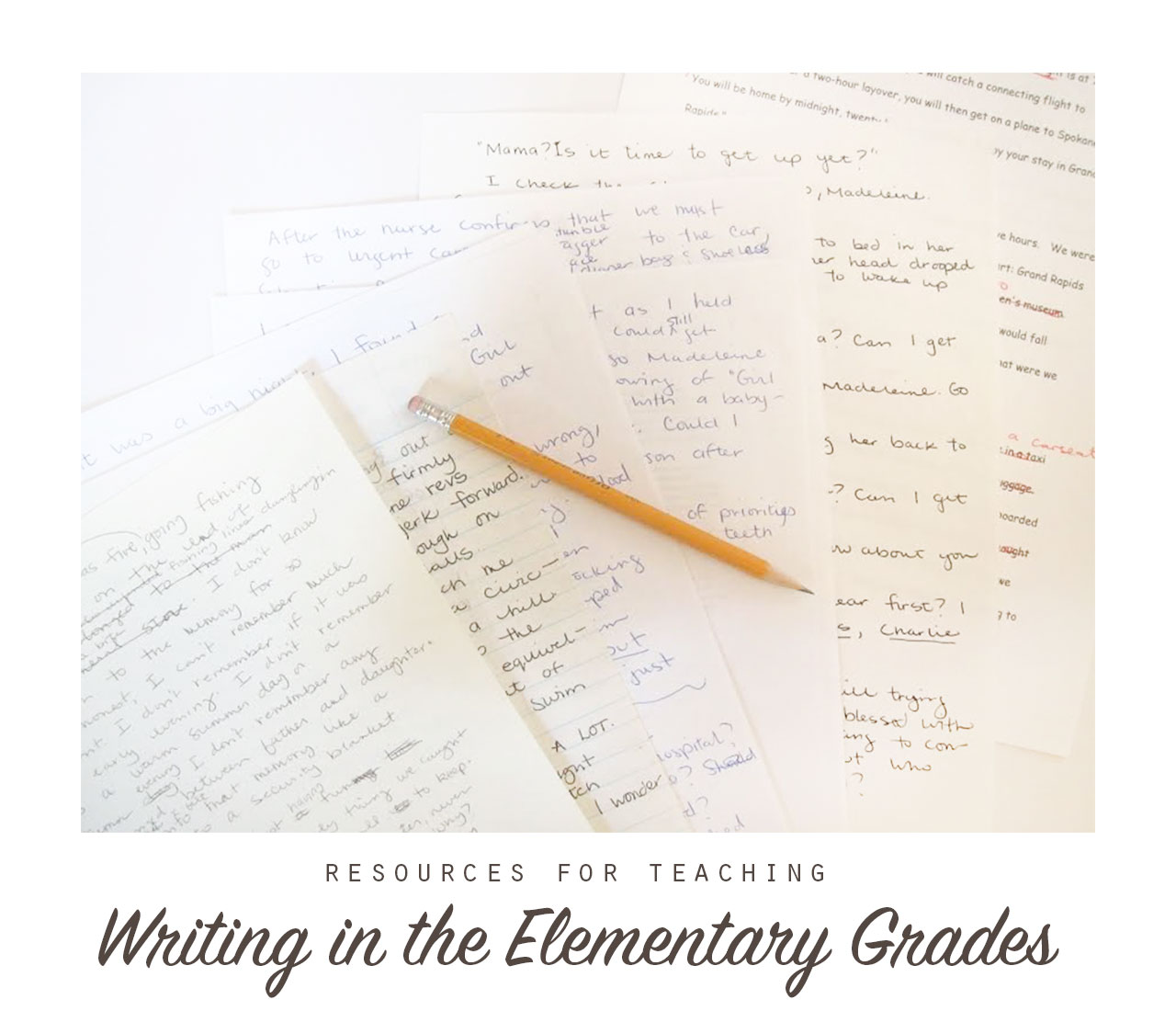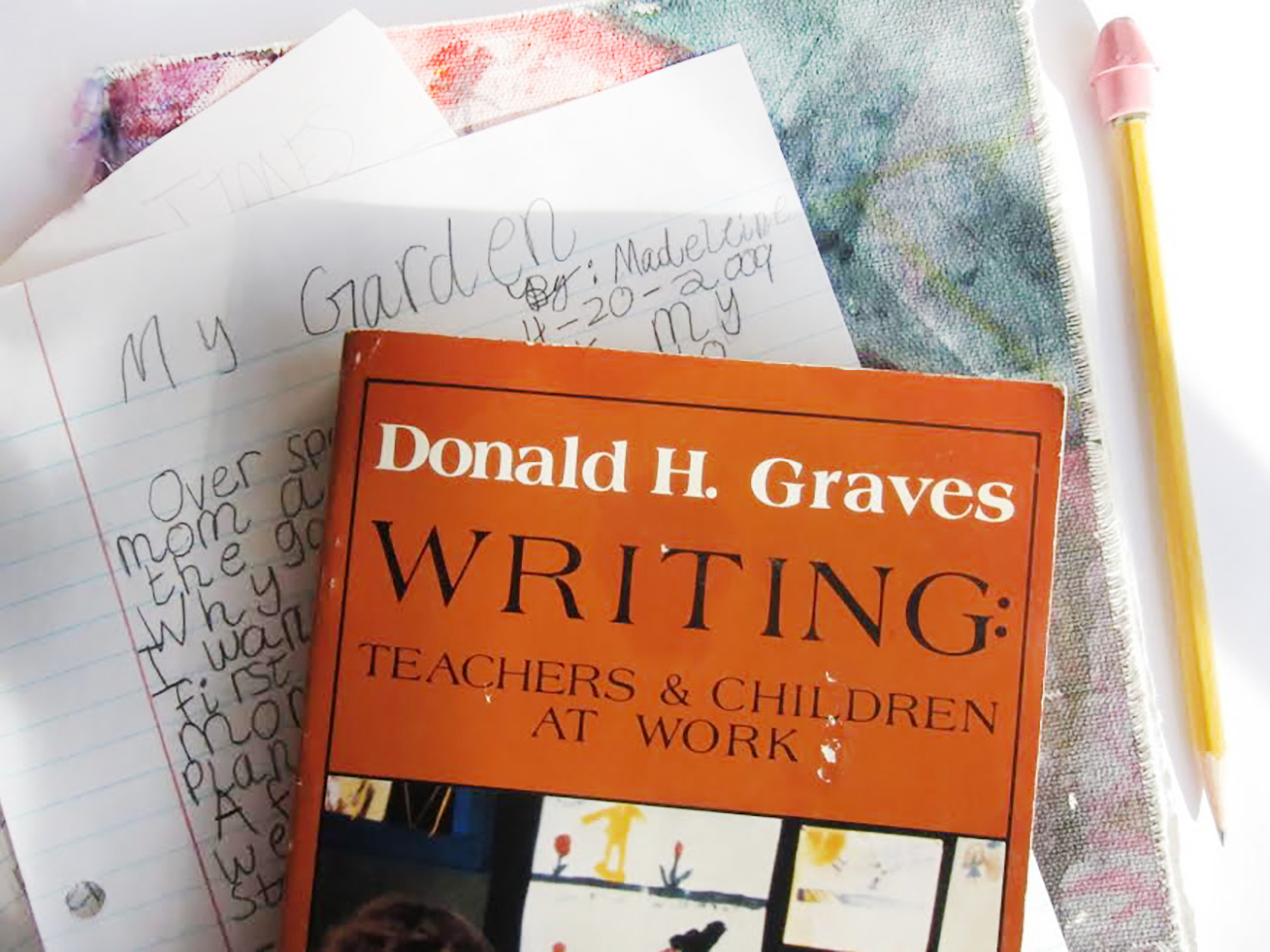Resources for Teaching Writing in the Elementary Grades
 When I first became a teacher, I was not a writer. Sure, I wrote in school and I really enjoyed some of the writing I produced in college. But I was not a writer. I thought teaching writing could be summed up with the five-paragraph essay and acrostic poems. Thankfully, my first teaching mentor handed me a copy of Writing: Teachers and Children at Work. Through this book Donald Graves taught me the importance of writing with my students and recognizing them as young authors with stories to tell. His book became the cornerstone for my life as a writing teacher. If, like me, you do not see yourself as a writer, I invite you to read any one of the books listed below and see if you don’t fall in love with teaching writing.
When I first became a teacher, I was not a writer. Sure, I wrote in school and I really enjoyed some of the writing I produced in college. But I was not a writer. I thought teaching writing could be summed up with the five-paragraph essay and acrostic poems. Thankfully, my first teaching mentor handed me a copy of Writing: Teachers and Children at Work. Through this book Donald Graves taught me the importance of writing with my students and recognizing them as young authors with stories to tell. His book became the cornerstone for my life as a writing teacher. If, like me, you do not see yourself as a writer, I invite you to read any one of the books listed below and see if you don’t fall in love with teaching writing.
Top 5 Resources:
Every Saturday morning I look forward to reading Choice Literacy’s e-newsletter. They offer a membership that allows access to all of their resources, but even non-members can enjoy a wide range of free content. In addition to articles on writers’ notebooks, conferencing with young authors, and mini-lessons, you can also enjoy podcasts on a variety of topics.
Teaching the Qualities of Writing
By JoAnn Portalupi and Ralph Fletcher (Grades 3-6)
This binder, filled with lesson cards, focuses on developing writers’ ideas, language, presentation, and design. While there is no separate category, voice is taught throughout the lessons. There are suggested cycles, but teachers can easily customize instruction. I always start with the “Launch” cycle, but then I use the lessons according to the needs of the writers I am working with. Each lesson card includes an introduction for the teacher, suggested text to model what you are teaching (often provided on the back of the card), an example of what your lesson might sound like, and conference questions.
By Shelley Harwayne
In addition to not being a writer when I first started teaching, I also knew very little about children’s literature. What I knew, I mostly learned in college, annotating books for class and jotting down titles professors recommended. Then I read Lasting Impressions. Shelley Harwayne will guide you on a path to becoming an expert on children’s literature. She will inspire you to find just the right book to model what a student is trying to do as a writer. For example, when my daughter started writing poems about nature, I suggested she read Mary Oliver. When Jania was struggling to find her voice, we turned to Honey, I Love and Because of Winn Dixie, studying how the authors created characters we felt we knew. Reading Lasting Impressions not only informed me, but it also sparked a love for children’s literature that I continue to share with young readers and authors.

In the Middle (Grades 4-8)
By Nancie Atwell
Nancie Atwell tells a story about Donald Graves visiting her class. At the end of his observation, he stood in her doorway smiling. She asked, “What are you thinking?” She anticipated all the wonderful things he might say about her teaching, and he replied, “You are so organized.” This was not the answer she was hoping for, but it is true. Reading this book will help you organize your writing workshop. She will show you how to establish expectations, teach conventions and keep records of lessons taught to individual students, and how to create an environment for writers. She also provides surveys, self-evaluation forms, and examples of students’ work.
How’s It Going?: A Practical Guide to Conferring with Student Writers
By Carl Anderson
I love this book because of its simplicity. Carl Anderson really taught me that conferences with young writers are conversations. My first priority in a conference is to just listen. No agenda. Just listen. What is this writer trying to do? What does this writer need me to teach him right now? What feedback can I give this writer to help him grow? What author can I suggest that this writer can learn from? And know that sometimes the writing is so vulnerable we just respond as one human to another. Carl writes, “…my job as a writing teacher is to help students become better writers, not to improve the pieces of writing they are currently working on (p.41).” This was a huge revelation for me. One I am very grateful for.
O.K., I said top 5, but the best resource I have found in teaching writing is my pencil. The first time I sat down to write in front of my class with an overhead projector (yep) and no idea what I was doing, I told a story about going fishing with my dad when I was five years old. Was it good? No. But I modeled writing for my students: where I found topics for writing (my interests, experiences, loves, pet peeves); why I chose this topic (because it was a treasured moment when I felt very close to my dad); and how I got started just telling my story, trying to give specific details and helping the reader feel what I was feeling. It was a first draft—and it was rough—but it invited students to tell their own stories. And they did—with much enthusiasm.
More of My Favorites…
Online Resources
- To Make a Prairie
- National Writing Project
- The Reading and Writing Project (videos on narrative, explanatory and opinion writing)
- National Council of Teachers of English
- Stenhouse Publishers (videos from authors, some on writing)
- Heinemann Publishing (videos from their authors, some on writing)
Books on…
Teaching Writing
- The Art of Teaching Writing, by Lucy Calkins
- Writing: Teachers and Children at Work, by Donald Graves
- Craft Lessons: Teaching Writing K-8, by Ralph Fletcher and JoAnn Portalupi
- Nonfiction Craft Lessons: Teaching Information Writing K-8, by Ralph Fletcher and JoAnn Portalupi
- Wondrous Words, by Katie Wood Ray
- Boy Writers: Reclaiming Their Voices, by Ralph Fletcher
Revision
- After The End: Teaching and Learning Creative Revision, by Barry Lane
- The Revision Toolbox, by Georgia Heard
Grammar and Punctuation
- A Fresh Approach to Teaching Punctuation, by Janet Angelillo
- Mechanically Inclined: Building Grammar, Usage, and Style into Writer’s Workshop, by Jeff Anderson
- Funner Grammar, by Sandra Wilde
- Teaching Grammar in Context, by Constance Weaver
Poetry
- Poetry and the Child, by Flora J. Arnstein (out of print, but worth finding)
- For the Good of the Earth and Sun: Teaching Poetry, by Georgia Heard
- Awakening the Heart: Exploring Poetry in Elementary and Middle School, by Georgia Heard
